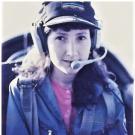Research in dynamics includes classical ground vehicle, aircraft and spacecraft dynamics, as well as non-classical dynamics such as nonlinear dynamics, molecular dynamics and computational statistical mechanics. Mathematical methods and numerical analysis for engineering systems are essential parts of this research.
Control systems are an integral part of most, if not all, the systems that are analyzed and designed by mechanical and aerospace engineers. As the name implies, the ultimate purpose of a control system in mechanical and aerospace applications is to allow a dynamic system to perform the task for which it has been designed safely, efficiently and accurately. A typical control system design involves three fundamental and interdependent components associated with sensing, control computation and actuation. Development of the requisite skills necessary to integrate these components in an effective control system design require a firm grounding in mathematics, fluid mechanics and system dynamics, sub-disciplines that form the core of the curricula in mechanical and aerospace programs.
A fundamental challenge in this area includes addressing uncertainties (dynamic system parameter variations and disturbances) so that the stability and the performance of these controlled dynamic systems are not compromised. Examples range from an automatic landing system for a commercial aircraft, a motion control system for a high-precision milling machine, a stability augmentation device for an automobile, and a pump to automatically regulate insulin for diabetics.
















